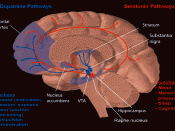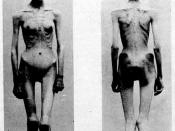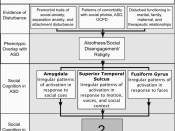Does the media encourage eating disorders in today's adolescents? Today's society is undeniably marked by cultural norms and ideals. The question is however, does the media's depiction of this norm cause harmful behavior in it's population? I think that it does and reaserchers have shown that there is a bias in the way television targets children in advertising and that this media influence over this easily persuasive age-group has always been observable (Miles M 1995). This targeting of audience members serves the purpose of singling out the most desirable consumer for the product to encourage their economic support. So if advertising is only concerned with selling products, why is it blamed for the low self-esteem and body image and thus the bullimia and anorexia seen in today's young men and women.
The images projected by the media in commercials and television programmes give today's consumers an idea of what "normal" should look like.
The people in these ads all have below average body proportions, material possesions and social status in order to deserve the attention the ad places on them. Viewers see the ads and compare the body images they see to themselves, which is likely to reveal a discrepancy. I too often find myself comparing myself to the waif-like models on television and everytime I do this my self-esteem lowers dramaticaly. Five years ago, the average model weighed twenty three per cent less than the average women of the time and the difference is only growing.
Research suggests that about one per cent of female adolescents have anorexia. That means that about one out of every hundered young women between ten and twenty are starving themselves, sometimes to death. Eating disorders usually occur during adolescence and unfortunately "this is when the media has the strongest influence on your life."...


